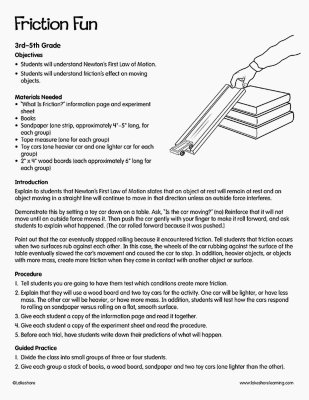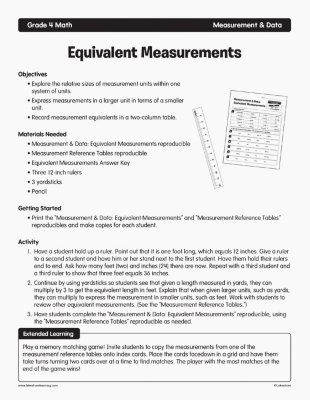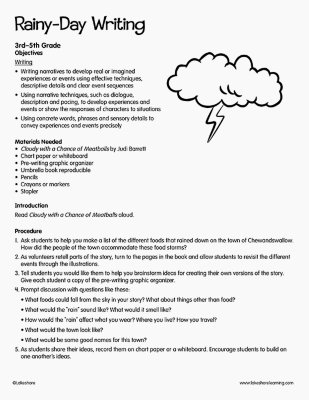Narrow by Grade
- Infant (3)
- Toddler (8)
- Preschool (0)
- Pre-K (3)
- Kindergarten (0)
- 1st (1)
- 2nd (1)
- 3rd (1)
- 4th (3)
- 5th (1)
- 6th & Up (0)
Grade 4th
Narrow by Age
- 0-18m (0)
- 18-36m (0)
- 3 yrs. (0)
- 4 yrs. (0)
- 5 yrs. (0)
- 6 yrs. (0)
- 7 yrs. (0)
- 8 yrs. (1)
- 9 yrs. (3)
- 10 yrs. (1)
- 11 yrs. & Up (0)
Age
3 results for "sensory table"
Filters
Clear All
Friction Fun
4th Grade
Objectives Students will understand Newton’s First Law of Motion. Students will understand friction’s effect on moving objects. Materials Needed “What Is Friction?” information page and experiment sheet Books Sandpaper (one strip, approximately 4" - 5" long, for each group) Tape measure (one for each group) Toy cars (one heavier car and one lighter car for each group) 2" x 4" wood boards (each approximately 6" long for each group) Introduction Explain to students that Newton’s First Law of Motion states that an object at rest will remain at rest and an object moving in a straight line will continue to move in that direction unless an outside force interferes. Demonstrate this by setting a toy car down on a table. Ask, “Is the car moving?” (no) Reinforce that it will not move until an outside force moves it. Then push the car gently with your finger to make it roll forward, and ask students to explain what happened. (The car rolled forward because it was pushed.) Point out that the car eventually stopped rolling because it encountered friction. Tell students that friction occurs when two surfaces rub against each other. In this case, the wheels of the car rubbing against the surface of the table eventually slowed the car’s movement and caused the car to stop. In addition, heavier objects, or objects with more mass, create more friction when they come in contact with another object or surface.
View Lesson PlanEquivalent Measurements
4th Grade
Objectives
- Explore the relative sizes of measurement units within one system of units.
- Express measurements in a larger unit in terms of a smaller unit.
- Record measurement equivalents in a two-column table.
Rainy-Day Writing
3rd Grade - 5th Grade
Objectives Writing Writing narratives to develop real or imagined experiences or events using effective techniques, descriptive details and clear event sequences Using narrative techniques, such as dialogue, description and pacing, to develop experiences and events or show the responses of characters to situations Using concrete words, phrases and sensory details to convey experiences and events precisely Materials Needed Cloudy with a Chance of Meatballs by Judi Barrett Chart paper or whiteboard Pre-writing graphic organizer Umbrella book reproducible Pencils Crayons or markers Stapler Introduction Read Cloudy with a Chance of Meatballs aloud.
View Lesson Plan

